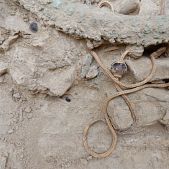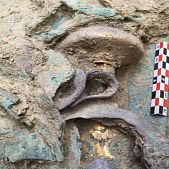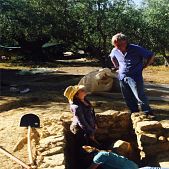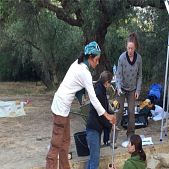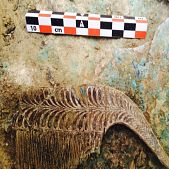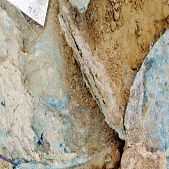
Αrchaeologists uncovered undisturbed rich grave
A team of US archaeologists in Greece have uncovered the undisturbed rich grave of an ancient warrior dated at 1.500 B.C. along with a huge hoard of treasure, according to the Greek culture ministry. It is the most impressive display case of wealth in prehistoric burial sites of mainland Greece that has come to light over the past 65 years.
The wooden coffin of the unknown soldier, evidently a person of some importance, was found on the site of the Mycenaean-era Palace of Nestor on Greece’s Peloponnese peninsula.
He had been laid to rest with an array of fine gold jewellery, including an ornate string of pearls, signet rings, a bronze sword with a gold and ivory handle, silver vases and ivory combs.
The jewellery is decorated in the style of the Minoans, the civilisation that flourished on the island of Crete from around 2000 BC, with the figures of deities, animals and floral motifs. The archaeologists, Jack L Davis and Sharon R Stocker from the University of Cincinnati, have identified more than 1,400 pieces “whose quality testifies to the influence of the Minoans” on the later Mycenaeans.
“Probably not since the 1950s have we found such a rich tomb,” said James C. Wright, the director of the American School of Classical Studies at Athens. Seeing the tomb “was a real highlight of my archaeological career,” said Thomas M. Brogan, the director of the Institute for Aegean Prehistory Study Center for East Crete, noting that “you can count on one hand the number of tombs as wealthy as this one.”
The Mycenean civilisation spread from the Peloponnese across the whole of the eastern Mediterranean in the second century BC. The tomb, which stands at 2.4 metres (7ft 10in) long and 1.5 metres wide, was unearthed during excavations begun in May near Pylos, on the site of the palace of Nestor.
The palace at Pylos was first excavated by Carl Blegen, also of the University of Cincinnati, who on his first day of digging in 1939 discovered a large cache of tablets written in the script known as Linear B, later deciphered as the earliest written form of Greek.

